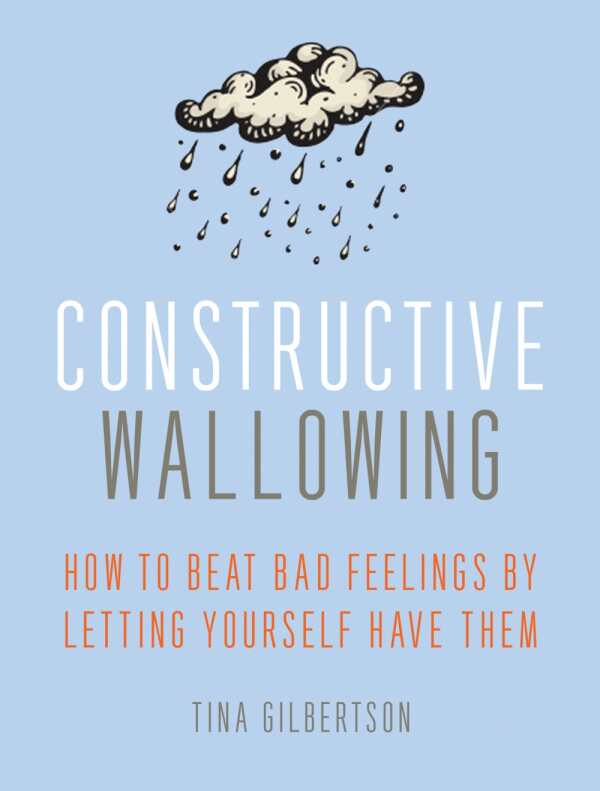Constructive Wallowing
How to Beat Bad Feelings by Letting Yourself Have Them
Entertaining and insightful, Constructive Wallowing provides clear instructions on how to “feel your feelings.”
Laughter is the best medicine, as many have said, and psychotherapist Tina Gilbertson’s new book, Constructive Wallowing: How to Beat Bad Feelings by Letting Yourself Have Them is laugh-out-loud funny. The author conveys her insightful thesis in smart, welcoming language that entertains and enlightens along the way.
Much is made of the success of storytelling today when it comes to branding products and companies and a self-help book should be no exception. Gilbertson lures the reader in with her own hilarious anecdotes, including when she speaks in the first person of her own shift about “feeling her feelings.” Doctors, family, friends, and well-meaning strangers spout the platitude “feeling your feelings” as the way out of psychic pain but rarely provide explicit instructions. The author provides clear definitions, exercises, and case studies in a warm, personal, and intelligent voice as she, “offers a practical and effective alternative to kicking yourself when you’re down.”
The case studies are not run-of-the-mill. They provide fresh examples that resonate. Natasha is wheelchair-bound at eighteen years old and tries to read her way out of negative thoughts. Dan joins the military at age twenty-eight after failing at finding a job, and then steps on a land mine. Rage and sadness are his calling cards. Kendra appears to have it all but lacks motivation and feels bad about herself.
Constructive Wallowing invites readers to believe that everyone’s issues, no matter how small, are important and that sweeping them under the carpet does more harm than good. “Keep in mind that your feelings are not the problem. The situation is the problem. Your feelings are just reminding you that the situation is not a good one,” Gilbertson writes.
Each chapter ends with relevant quotes from a wide range of sources including rock ‘n rollers and famed philosophers. A short quiz is edifying as Gilbertson defines the oft-overlooked difference between feeling and thinking. Her asides are clever. “I’ll wait while you get a pencil. Take your time; I’ve got a magazine and a snack.”
Gilbertson writes of wallowing as something to do in private. “When you let yourself experience your true feelings, no one can see or hear what you’re doing, so it’s between just you and yourself.”
The crux of Gilbertson’s book, the T-R-U-T-H Technique is well honed in chapter 5 and emphasizes self-compassion over self-criticism. The guide to finding a “feelings-friendly therapist” in chapter 10 is worth the price of the book alone and can stand as a guide for engaging the right therapist no matter what issues one faces.
Constructive Wallowing is insightful, intelligent, and a pleasure to read. Gilbertson’s theory is viable and she conveys it in a voice that has the reader hoping for a follow-up.
Reviewed by
Dindy Yokel
Disclosure: This article is not an endorsement, but a review. The publisher of this book provided free copies of the book and paid a small fee to have their book reviewed by a professional reviewer. Foreword Reviews and Clarion Reviews make no guarantee that the publisher will receive a positive review. Foreword Magazine, Inc. is disclosing this in accordance with the Federal Trade Commission’s 16 CFR, Part 255.

